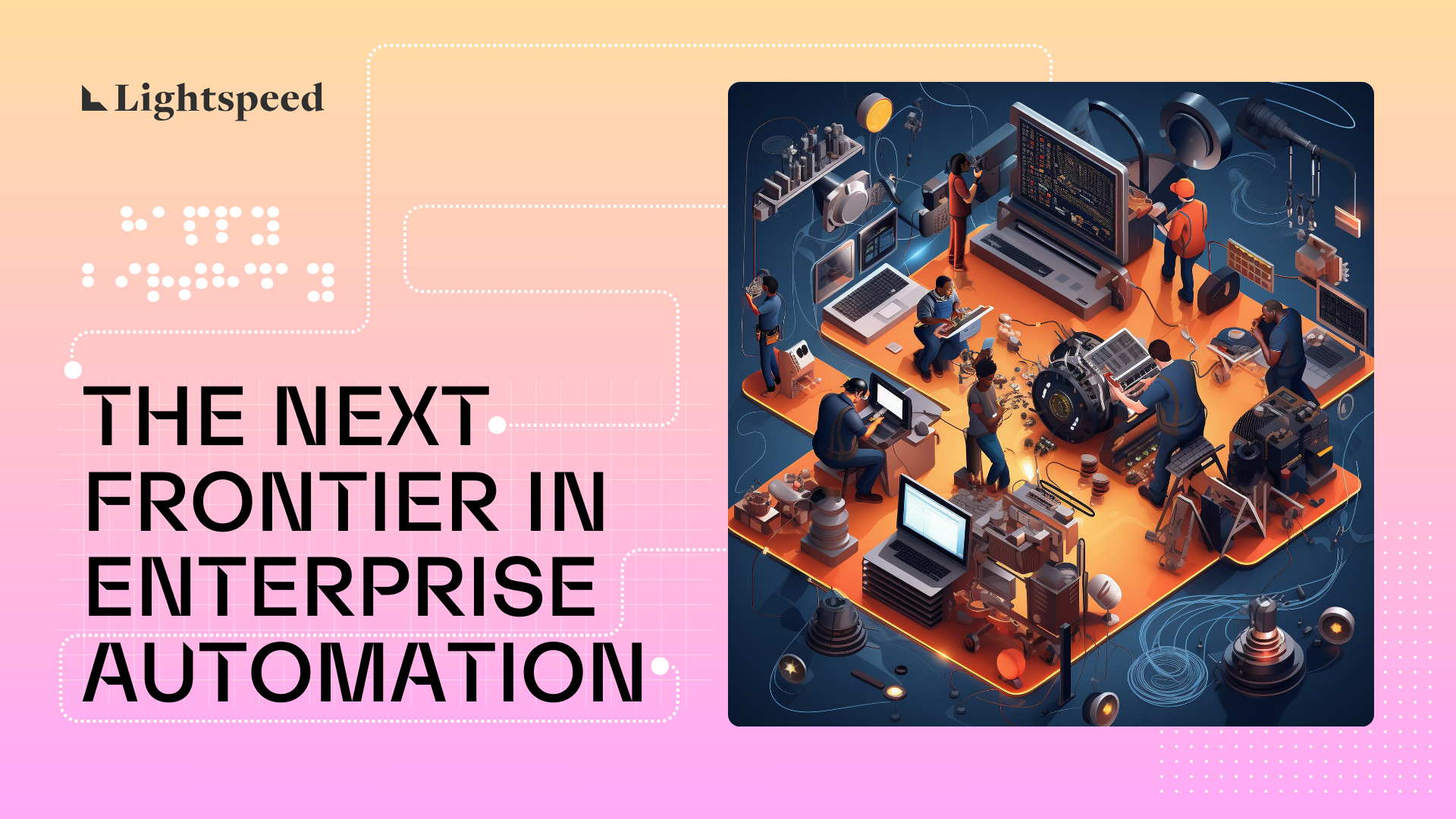
We are on the cusp of a new category of software focused on enterprise automation. We’ve talked previously about our thesis for SaaS 4.0 and the era of cognition. One of the most exciting areas where we believe this will take hold is around enterprise automation.
The current generation of robotic process automation (RPA) can be best summarized as dumb bots. We believe that agentic enterprise automation will unlock a 10x+ larger opportunity than RPA. For the first time, LLMs are providing superior accuracy and reasoning capabilities, grasping context, interpreting user intent, applying reasoning, and making complex decisions, while adapting to new tasks. Most importantly, they can do this while dealing with unstructured data, which, as we know, is most of an enterprise’s data.
This is going to unlock massive productivity gains for companies of all shapes and sizes and will be one of the clearest applications of LLMs in the enterprise space.
The legacy generation — RPA
RPA became a mainstream software category over the last decade. The promise of RPA was that bots could automate highly repetitive, high-volume tasks that were traditionally performed by employees. Common applications of RPA include processing transactions, data entry/manipulation, and document processing, with significant adoption in sectors like finance, healthcare, and energy, particularly where legacy systems are prevalent. UiPath was born in 2005 and emerged as the leader in this space, and today generates over $1.5BN in ARR over 11,000 customers with a market cap of $7BN.
What’s fascinating about the UiPath story, however, is that the SI ecosystem around the company has been critical to their success. Over 70% of customers leverage an SI when implementing RPA. In fact, according to Forrester, the market for services in RPA is nearly 3x larger than the current software revenue. That’s a staggering statistic. In other words, nearly 75% of the market opportunity has historically been a services opportunity versus a software market.
Furthermore, RPA deployments have been notoriously brittle because any UI change to an application leads to the bot breaking down. An EY report found that 30-50% of RPA projects fail today. A lot of customization has also been required for each bot to be deployed, making it harder to easily expand across teams and departments. According to Deloitte, only 3% of companies were able to scale their RPA initiatives.
Agentic automation and the digital workforce
All that is about to change. For the first time, we are seeing a combination of computer vision and LLM models come together to automate an ever-expanding range of workflows.
Every CIO we’ve spoken to is paying attention here. In particular, CIOs care significantly about reducing cost by removing manual workflows, increasing process speed through automation, and improving quality issues because of the reduction of mistakes in error-prone tasks.
The prior generation of technology here had a linear flow, where a user would script a set of actions and the bot would perform these actions in sequence. There was no judgment being performed or reasoning capabilities. In the future, LLMs will allow these bots to actually act like agentic workers that can perform the task of the human, without needing the entire flow to be scripted ahead of time. The analogy we think of here is how you onboard an employee. You typically give them a set of instructions about how to perform the job, but beyond that, you expect them to learn on the job, make adaptations, and ask questions when they get stuck or something isn’t clear. Agentic automation will initially start at perhaps the level of an intern but over time will perform on par with some of the most experienced team members performing that task.
Primitives for success in agentic automation
In our view, the winners in this space will be:
1. Vertical-specific: LLMs can be fine tuned on data to these specific domains, resulting in deeper understanding of the terminology, concepts and workflows that characterize each domain.
2. End-to-end: Current RPA is marked by bots that cover only part of the workflow because of the limitations of the technology. LLMs will enable end-to-end automation in a way that drives deeper ROI. Importantly, these tools will have auditability built-in with better tracing to determine why certain forks in a process have been chosen.
3. Ability to write, not just read: Agentic automation will not just be about automating a series of steps, but will incorporate content generation within the workflow, something that previously was not possible. Because of LLM’s ability to reason, their ability to interpret data and then infer the next best action means the surface area of automation increases dramatically.
4. Unstructured understanding: The ability to work with unstructured data means agentic automation will see faster deployment times and will require less coding/customization to build a workflow.

If you’re building the next generation of enterprise automation, come say hello. We’d love to meet you!
Authors




